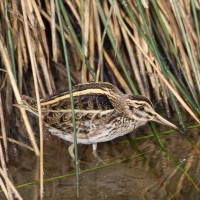Description
The river Plym Estuary is an important area for wintering birds. It houses wintering populations of silkkihaikara, valkoviklo, mustanmerenlokki, grönlanninlokki, isolokki, avosetti, tukkakoskelo, kuovi and punajalkaviklo. But many other birds can be seen, see the birdlist below.
Details
Access
The estuary is surrounded by roads and footpaths. It is easily watched and has parkland on it's eastern side. It's South side is best during sunny days, avoiding glare off exposed mud/water. The high water roost is at it's North Eastern end, for those with limited time and wanting to visit the high water roost only use Coypool Park & Ride (Free - marked with P and Star on map). If you want to walk around the entire estuary, that's a distance of 7 km. Click on the P's on the map to get directions.
Terrain and Habitat
Scattered trees and bushes , Grassland , Wetland , River , Sea , Mud flats , City/village , ForestConditions
Flat , Open landscape , High water possibleCircular trail
YesIs a telescope useful?
Can be usefulGood birding season
All year roundBest time to visit
Spring migration , Autumn migration , Autumn , Spring , WinterRoute
Paved road , Wide path , Narrow trailDifficulty walking trail
EasyAccessible by
Foot , Bicycle , Car , WheelchairBirdwatching hide / platform
YesExtra info
Recently the National Trust who own Saltram Park have closed off access to the embankment that holds the high water roost at Blaxton Meadow (or Blaxton Marsh/, please DO NOT walk on this embankment as this has a major effect on wintering birds.
NB, Blaxton Meadow (or Marsh) is not to be confused with Blaxton Creek, which can be found on Lopwell Dam and Tavy Estuary (see separate entry).




